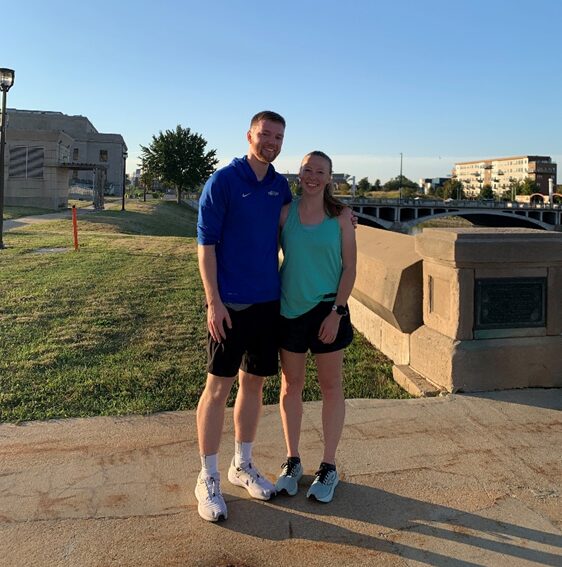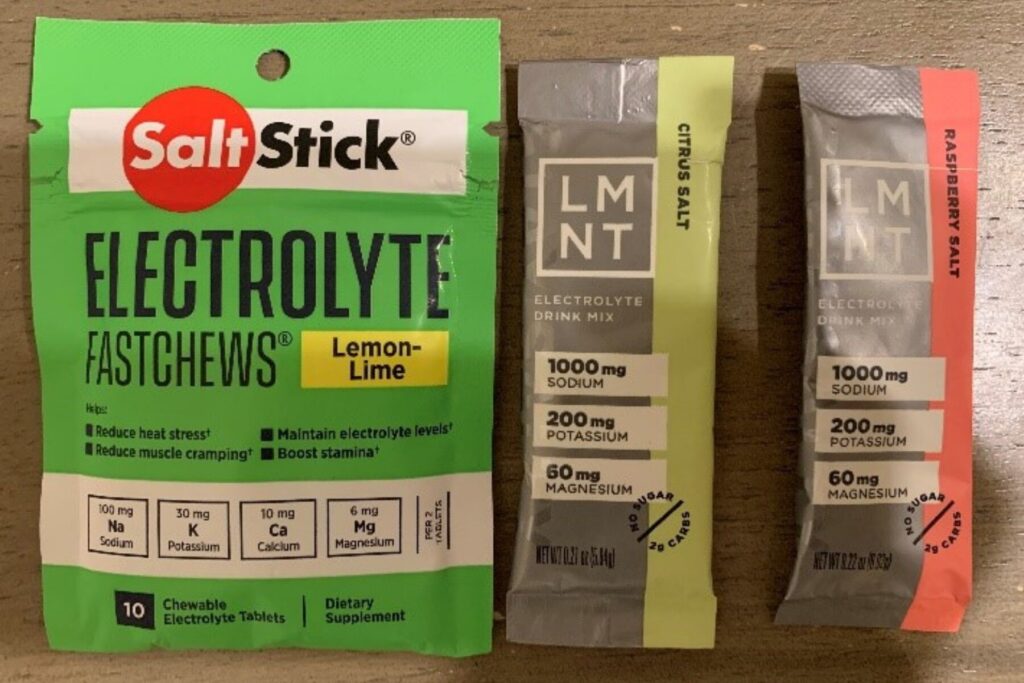ORA Physical Therapist, Keeley Knobloch, takes readers along on her training for her first marathon, the Chicago Marathon. A lifelong runner and alumna of the St. Ambrose Cross Country Team and PT graduate, Keeley joins thousands of avid runners, from teens to seniors, who make this life-altering commitment. In each segment, Keeley will share her thoughts, goals, and tips for those interested in running or making that 26.2 on their bucket list.
Segment 3: Marathon Equipment
Picking out Shoes and Gelling with Nutrition
Three weeks to go until race day!
Even for a veteran runner like me, I’ve gotten pretty excited these past couple of weeks, as I hit the biggest milestone of training: completing the ever daunting 20-mile-long run! I laid everything out the night before so when the alarm went off at 5 a.m., I could just go into “robot” mode. I had my standard Nutella toast with banana and then did some foam rolling to get the body ready.
I stuffed my pockets with a mixture of different fueling for carbs and used them every 5 miles. I’ve struggled getting gels down for months as I did not like the consistency. I’ve ended up loving either jellybeans or a liquid form of carbs.
I met my uncle (who will be biking along with me) as well as my brother, Timothy, who is a collegiate runner in his own right. He wanted to hop in for my first 8 miles. He does a great job keeping me in check with our pace because I tend to pick up the pace when I get chatty.
It was a hot one so I was glad I knocked it out early. I’ve learned just how critical choosing the right shoe really is. For runners, some shoes have more cushion in the heel to reduce ground contact forces if you are a heel striker. Some shoes have more support within the arch area as a guiderail to reduce over pronating. I’ve been wearing Brooks shoes during my training and change these out every 300 miles. See my tips below.

My “little” brother Timothy who has always been my favorite training partner.
After hitting mile 20, it was a quick turnaround to shower and get up to Iowa City to attend the Hawkeye game with some family. (I don’t recommend running 20 miles and then logging another 10 miles walking/using stairs at a football game afterwards but… life is short!)
Just this past weekend, it was also Quad City Marathon week, and our own ORA marathon relay team of Lindsey Gidel, David Carius, Kirsten Ukleja, Michelle Heitz and Andy Roth finished 4th place in the corporate division. Special shout out to our Silvis PTA Lacey Billington who ran the marathon after an extremely impressive training block!
Where the Sole Meets the Road: Choosing the Right Shoe for You
Running shoe investment is the single most important equipment to a runner. For newer runners, I recommend going directly to a running specialty store such as Running Wild or Feet Fleet here in the Quad Cities to get fitted properly.
They can identify patterns in your gait that can be addressed with a good shoe fit and whether you are an over pronator and need more cushion or more stability. Common running specialty brands include: Brooks, Asics, Saucony, Hoka, New Balance and On.
I’ve been using the Brooks Adrenaline GTS 23 and the Glycerin 21 during my marathon training. Just in 2024, I’ve begun using the Brooks Hyperion Elite 4 for racing. It’s a lightweight road racing shoe that’s been engineered to improve the rolling through your foot. Racing shoes are not a necessity, but I personally like to feel a bit more bounce when I race.
As a Physical Therapist for ORA Orthopedics, I see a lot of the hip and knee injuries in runners that can stem from poor landing mechanics (foot strike). A poorly fit shoe can destabilize your foot at initial contact with the ground. In the Journal of biomechanics, a runner is absorbing 7x the force of their body weight with every stride. This force gets transmitted up into the knee, hip and spine.
The knee and hips take a beating if the ankle joint is not cushioned to take that force appropriately. And, when you compound that over thousands of steps and hundreds of miles it can add up to a much bigger issue.
One thing I recommend avoiding is changing your insoles while still using the same running shoe to squeeze out a couple more weeks’ use. This will not change the wear and tear on the actual shoe including the tread. While shoes can be expensive, it is worth making the investment 3-4x yearly vs fighting off chronic injuries.
In addition to shoes, a good running watch is a worthwhile investment. You absolutely don’t need to get carried away spending hundreds of dollars if you’d prefer something more straight forward. I love Garmin products and use the Garmin 630. Garmin makes a great app that Bluetooth saves all your runs with mileage, step count, heart rate and anything else you could want for feedback.

Salt tablets for mid run and Element electrolyte packets for water post run.
Nutrition Basics for Marathoners
Runner’s World Marathon nutrition: How to fuel your race (runnersworld.com) has some great outlines of calorie consumption during a marathon.
They recommend about 30 grams of carbs every 30-40 minutes. You will also need to replenish your electrolytes too (sodium/potassium) which are lost through sweat. These are not always included in carbohydrate-based gels. I encourage runners to be a “student” of their sport and really look at your nutrition labels. Start to become familiar with which products have carbs, electrolytes or even caffeine.
For even more detail on the basics of race nutrition, check out QC Nutrition Blogger Jeni Tackett and ORA Dr. J.C. Clark’s great discussion on race fueling here.
Hope to see you on the paths! – Keeley
Whether you enjoy jogging around the Quad Cities or aspire to compete in marathons like Keeley, the Running Program at ORA Physical Therapy has been designed to help runners manage injuries and prevent future ones. Our program breaks down appropriate techniques, improves a runner’s skill set, and provides education on injury and sport.
If you have a new or chronic running injury or simply looking to reach a higher level of running potential, schedule an appointment with a running specialist today at 309-767-0866 or visit qcora.com/physical-therapy.
